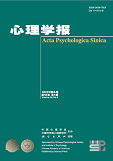Prosocial behaviors are voluntary behaviors aimed at benefiting others, which develop rapidly during preschool and provide a foundation for children’s social competence and moral development. According to the person-environment interaction (P×E) framework, children’s traits may interact with the family environment, affecting their prosocial behaviors. Numerous studies have established that parent-child relationship is a crucial component of family psychosocial environments in predicting children’s prosocial behaviors. Sensory processing sensitivity (SPS) is a temperament trait that reflects children’s sensitivity to environmental and social stimuli. Children with high SPS are more susceptible to environmental factors. Furthermore, previous research has suggested that the Val/Val genotype of the COMT Val158Met polymorphism may be a sensitive genotype for prosociality, interacting with environmental factors to influence individuals’ prosocial behaviors. In particular, prior research has proposed that different types of environmental sensitivities, such as temperamental, physiological, and genetic sensitivities, may have a multiplicative effect on social development. Parent-child relationship is an important family psychosocial environmental stimulus. More importantly, two distinct aspects of parent-child relationship, that is, closeness and conflict, may have different functions. Closeness emphasizes the parent-child connection and is characterized by emotional closeness and the sharing of private thoughts and feelings. Conversely, conflict refers to stressful experiences between parents and children that are accompanied by anger or irritation. Therefore, the present study investigated three-way interactive effects of closeness or conflict, SPS, and the COMT Val158Met polymorphism on preschoolers’ prosocial behaviors. Specifically, other hypotheses regarding potential differences in closeness and conflict were formulated.
A total of 507 preschoolers (Mage = 4.83, SD = 0.90; 236 girls) were recruited through advertisements at two local kindergartens. Saliva samples for DNA extraction were obtained from preschoolers. Their parents completed questionnaires on parent-child relationship, children’s SPS, and prosocial behaviors. Statistical analyses were performed in SPSS 24, Mplus 8.3, and R statistical software. First, a test for Hardy-Weinberg equilibrium and preliminary analyses were conducted. Moreover, linear regression models were conducted, with prosocial behaviors as the dependent variable to test for the main and interactive effects of closeness or conflict, SPS, and genotypes. Sex, age, and family socioeconomic status were included as covariates. The effects of parent-child closeness and parent-child conflict were examined in separate models, but the other dimension of parent-child relationship was controlled in each model. Finally, region of significance and reparameterization regression analyses were employed to examine the optimal shape of the P×E effect.
The results indicated that both parent-child closeness and SPS positively affected preschoolers’ prosocial behaviors (ps< 0.01), while parent-child conflict was negatively associated with prosocial behaviors (p< 0.001). The two-way interaction terms (closeness/conflict × SPS; closeness/conflict × the COMT Val158Met polymorphism; SPS × the COMT Val158Met polymorphism) and the three-way interactive effect of parent-child closeness, SPS, and the COMT Val158Met polymorphism on prosocial behaviors were not significant. However, the effect of parent-child conflict × SPS × the COMT Val158Met polymorphism on prosocial behaviors was significant. We conducted further analyses to compare the interactive effect of parent-child conflict and SPS in preschoolers with the Val/Val and Met+ genotypes on the COMTVal158Met polymorphism. A significant interaction term was observed in Val/Val genotype carriers (b= −0.18, p = 0.002, 95% CI [−0.304, −0.069]) but not Met carriers (b= 0.06, p = 0.286, 95% CI [−0.052, 0.167]). The region of significance test indicated that Val/Val genotype carriers with high SPS showed significantly more prosocial behaviors under a low level of parent-child conflict and fewer prosocial behaviors under a high level of parent-child conflict, which supports the differential susceptibility model. The results of the re-parameterized regression models further verified the shape of the interaction effect of parent-child conflict and SPS on preschoolers’ prosocial behaviors.
In summary, the present study signified that different types of sensitivities (temperament and genes) to family stressful environments may have a multiplicative effect on preschoolers’ prosocial behaviors. Furthermore, it suggested that preschoolers with both the sensitive genotype (Val/Val) and sensitive temperament trait (high SPS) were more affected by parent-child conflict and developed prosocial behaviors in a ‘‘for better and for worse’’ manner. The findings provide evidence for the differential susceptibility model and contribute to a further understanding of children’s prosocial behaviors based on the P×E approach, especially from the perspective of children’s multiple sensitivities.




